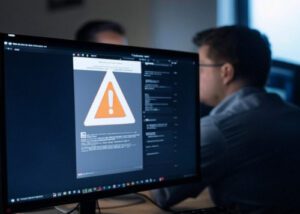 The following is a guest article by John Pettit, Chief Technology Officer at Promevo
The following is a guest article by John Pettit, Chief Technology Officer at Promevo
Three password resets. A ticket to provision access for a travel nurse. Another to revoke access for someone offboarding. A shared drive issue no one can trace. Then it’s time to dig through logs for the upcoming compliance report. For many healthcare IT teams, this is just a typical morning.
While clinical burnout gets most of the attention, the strain on IT is just as critical – and often overlooked. When IT is buried beneath routine maintenance and manual requests, it leaves little time to focus on strategic initiatives that improve patient care and operational efficiency.
To meet the demands of modern healthcare, organizations need to rethink how IT work gets done. Automation and intelligent workplace management solutions are essential. By reducing administrative burden, bringing consistency to fragmented systems, and freeing IT teams to focus on higher-value work, these solutions enable healthcare organizations to better support clinicians and, ultimately, deliver better patient outcomes.
The Weight of Everyday Tasks
In many healthcare systems, it’s not unusual for a single IT professional to support as many as 100 staff members. Factor in round-the-clock operations, and it’s easy to see how burnout can escalate behind the scenes.
So, where do teams get stuck? It’s often in routine, day-to-day tasks: onboarding, offboarding, managing access, and preparing audit reports. These responsibilities grow even more complicated when systems span both cloud platforms and legacy tools.
Without automation, these seemingly minor tasks can consume hours each week. Over time, they add up, keeping IT teams stuck in a cycle of constant firefighting instead of focusing on strategic priorities.
What to Look for in a Workplace Management Solution
Choosing the right workplace management solution can significantly reduce the burden on healthcare IT teams, but not all tools are created equal. The most effective platforms are built with the following capabilities in mind.
Automate Onboarding and Offboarding
High staff turnover and rotating roles, like travel nurses, make user management a constant task in healthcare. Managing these accounts manually across multiple systems is time-consuming and increases the risk of errors.
When onboarding is delayed, staff may start shifts without access to critical tools. Conversely, if offboarding isn’t handled quickly, inactive accounts can remain open, introducing security and compliance risks.
To mitigate these challenges, healthcare organizations need solutions that automate onboarding and offboarding seamlessly across all systems. The right tool can reduce provisioning time from hours to minutes while maintaining a more secure environment.
Delegate Admin Access Without Compromising Security
Because IT teams manage multiple platforms and environments, routing every minor request through central IT creates unnecessary bottlenecks and slows down overall productivity.
With a platform that enables delegated admin access, trusted team leads or department managers can manage routine tasks on their own — reducing IT workload and speeding up resolution times.
For example, a nurse manager with password reset access or a unit lead with basic admin permissions can resolve simple issues on the spot without waiting in the IT queue. This capability saves time across workflows and helps reduce the mental strain on already stretched IT teams.
Enable Visibility Into Drive Search and Permissions
In healthcare, where data sensitivity and access control are paramount, clear visibility into file ownership within your cloud environment is table stakes. Yet many cloud platforms don’t make it easy to track file ownership or external sharing activity.
With a platform that offers deep visibility and intuitive search functionality, IT teams can quickly identify misconfigured permissions, spot external sharing risks, and ensure the right users have access to the right data. This level of insight not only enhances security but also facilitates the support of audits and the prevention of data leaks before they occur.
Simplify Audit Reporting and Compliance Tracking
Compliance is a constant pressure in healthcare IT, and the weight of reporting often falls on already overstretched teams. HIPAA, ISO, and other regulatory standards require frequent and detailed reporting, and compiling the reports manually can take dozens of hours per quarter.
To ease the burden, leverage a solution that includes built-in activity logs, user behavior tracking, and customizable audit reports. These capabilities make it easier to surface what auditors need, spot potential policy violations early, and maintain ongoing compliance without scrambling at the last minute.
Streamline Patch Management and Updates
Staying current with security patches and software updates is critical in healthcare, but it’s often one of the most overlooked and manual tasks. Missed updates can create vulnerabilities and tracking patch status across systems drains IT bandwidth.
Instead of relying on manual checks, organizations can benefit from tools that centralize update visibility and allow scheduled, automated patching wherever possible. Reducing the amount of manual labor required for updates helps teams avoid security gaps, stay compliant, and protect patient data without overexerting staff.
Efficient Systems Power Stronger Teams
Burnout doesn’t have to be your reality. As healthcare organizations continue to modernize, lasting transformation begins with rethinking the everyday systems that hinder your team’s productivity.
With the right tools, IT teams can do far more than simply keep systems operational. They can drive innovation, reinforce the foundation of care delivery, and empower healthcare organizations to scale with confidence.




